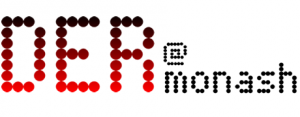There is a growing global movement within education to incorporate the Arts into the STE(A)M curriculum. Teachers are looking for new ways to help develop creative thinking and collaborative practices while giving their students technical skills in computing.
In this project, we invite kids to explore coding, engineering and choreography, along with the many elements of music making, from rhythm, melody, timbre and effects, through the use of our custom software which interfaces with different gestural controllers. Kids can engage in the software through different popular coding languages, from blockly to python, while still being physically and actively involved.
At the core of this project lies the recent developments in music technology which have allowed us to remap the connection between our bodies and sound. Though music and movement have always been intrinsically linked, the rise of the laptop DJ broke that nexus. On stage, performers’ movements are increasingly disconnected to the music being heard. At schools, kids need new ways of engaging with electronic music as it takes over our soundscape.
The idea behind this research is to reconnect music and movement, combining the physicality of acoustic performance with the endless possibilities of digital sound, allowing the ‘plucking’ of sounds out of thin air. Utilising gestural controllers and custom built software, the AirSticks have been developed to allow the triggering and manipulation of sound and visuals in a 3D playing space.
One Five Nine – Comatone & Foley (Performed by Alon Ilsar)
One shot/ one take 13/09/18
Performed by Alon Ilsar on the AirSticks
Interactive visuals by Matt Hughes
Music by Greg Seiler and Alon Ilsar (aka Comatone & Foley)
Filmed by Alex Ryan
We are now seeking a PhD candidate to further develop the AirSticks as a gestural instrument for live electronic music performance, music education and general health and wellbeing in collaboration with our interdisciplinary team at SensiLab.
This can be done through new performances, new software/hardware and new design methods. How can we reinvent the connection between our bodies, our ears and our creativity, and what new applications for the AirSticks can be discovered? In particular, how can we better understand the tools that kids want to express their musical creativity through movement while acquiring the skills required for a changing job market?
This is an ongoing project that overlaps with the development the AirSticks for use by professional artists.
Music, design, education, and software and hardware engineering disciplines welcome, ideas for PhD topics open for discussion with supervisors.
PhD Advertisement
Education Project Details
Airsticks project
This post was written by Alon Ilsar

